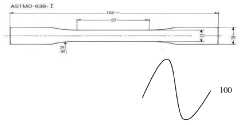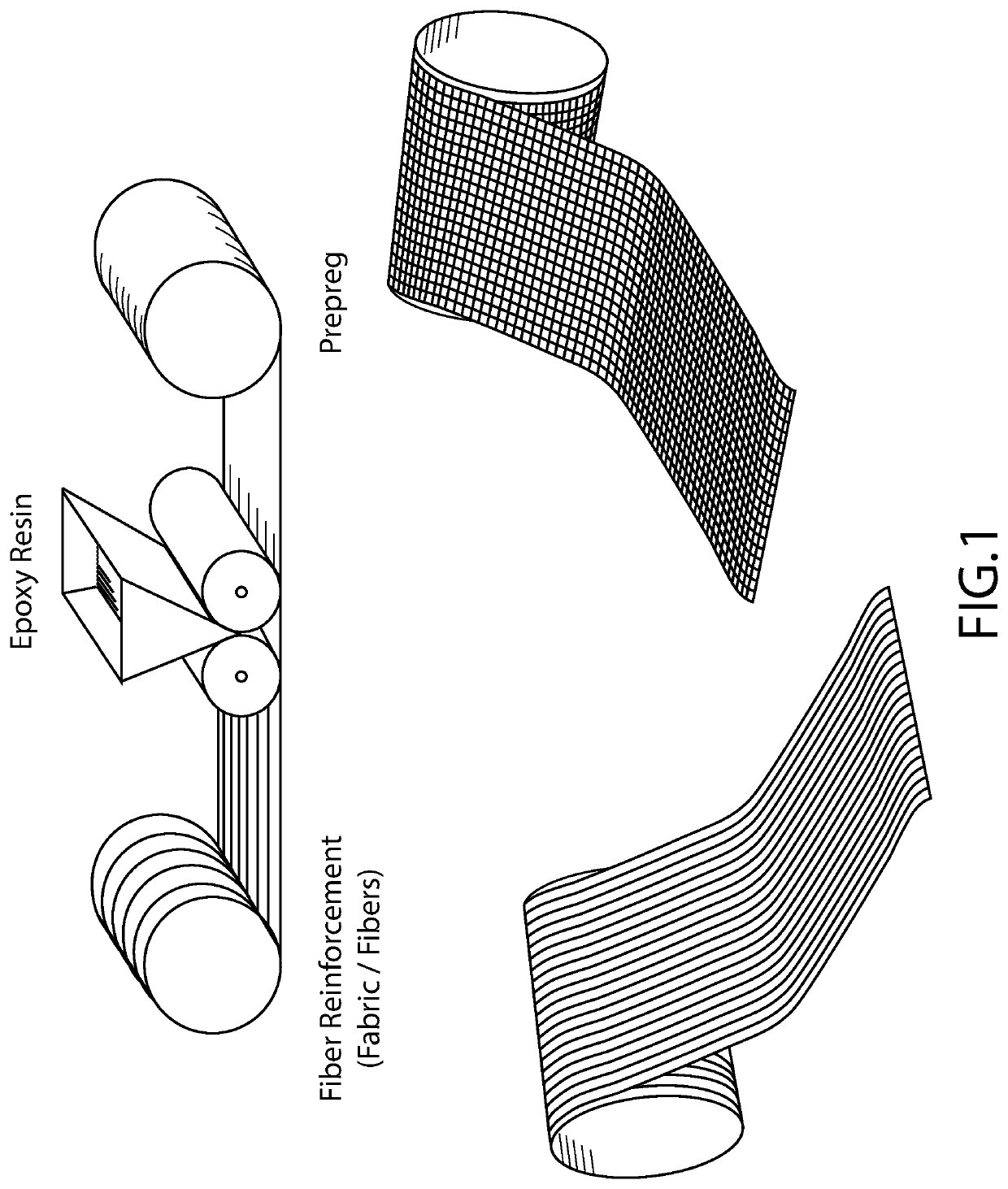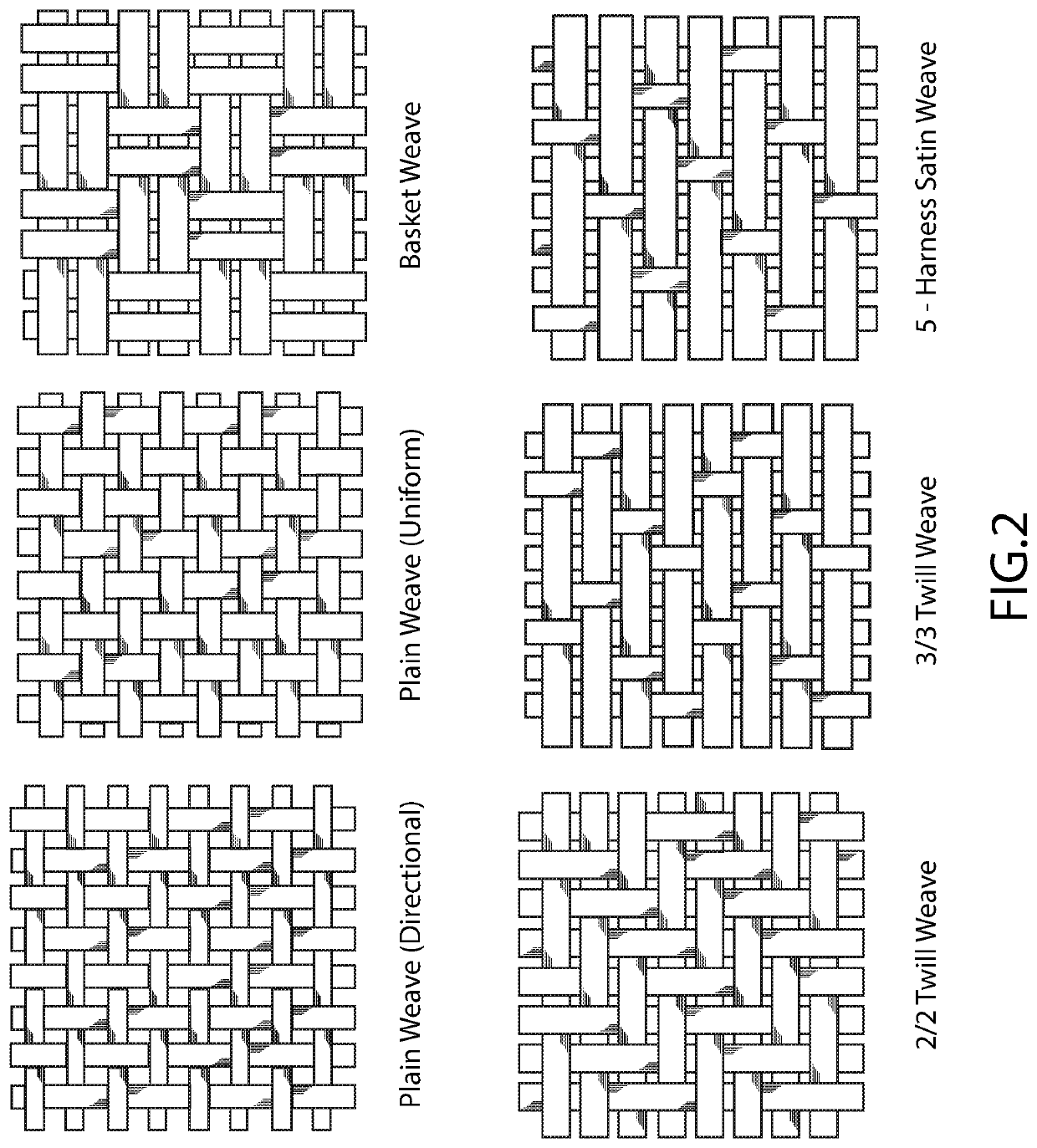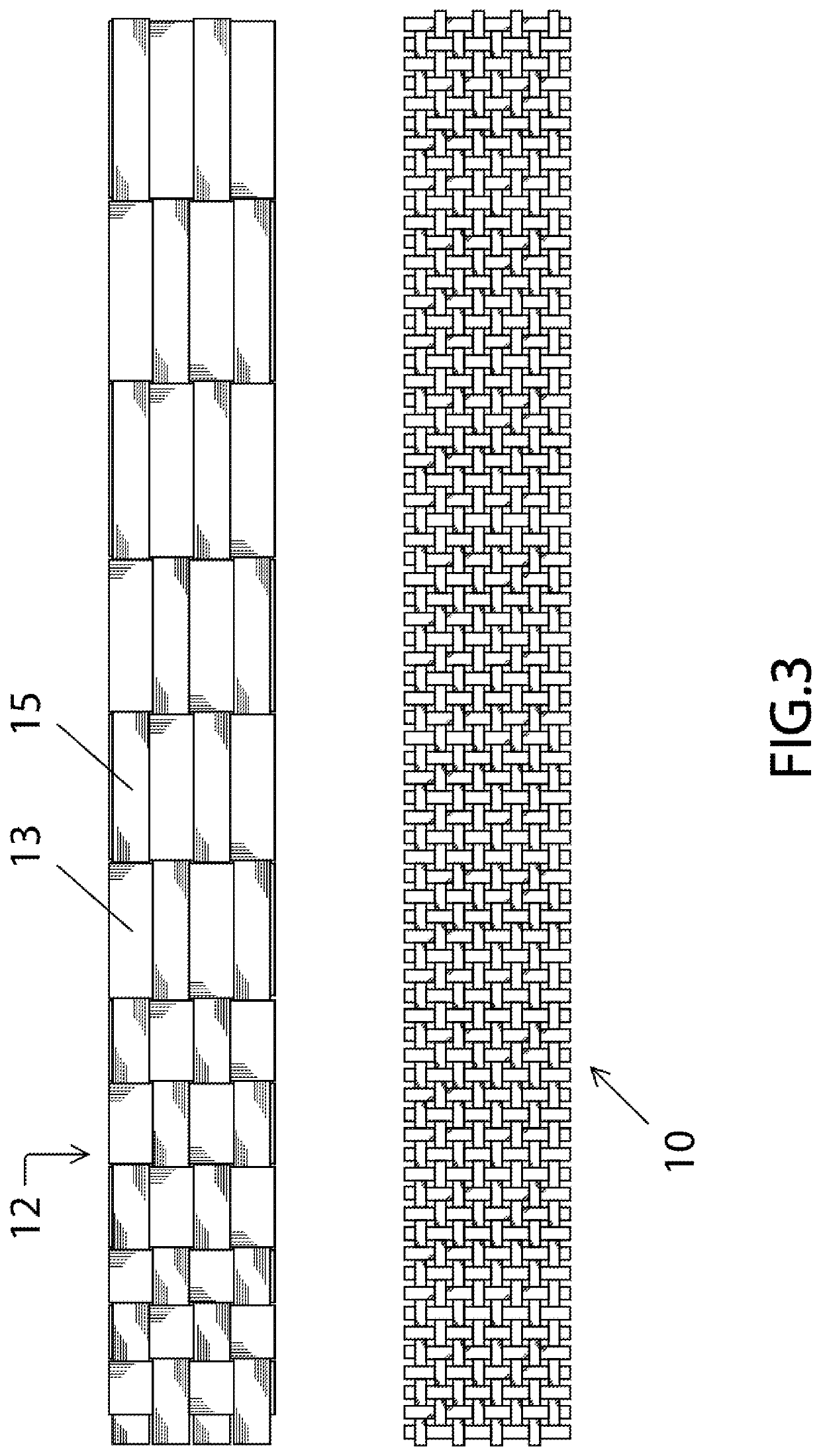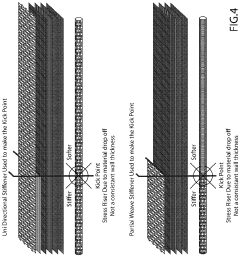How to Achieve Design Innovation in Kevlar Composite Materials?
JUL 10, 20259 MIN READ
Generate Your Research Report Instantly with AI Agent
Patsnap Eureka helps you evaluate technical feasibility & market potential.
Kevlar Composite Evolution and Innovation Goals
Kevlar composite materials have undergone significant evolution since their introduction in the 1970s. Initially developed as a lightweight, high-strength alternative to steel in tire reinforcement, Kevlar composites have expanded their applications across various industries. The evolution of these materials has been driven by the continuous pursuit of enhanced mechanical properties, improved durability, and increased functionality.
In the early stages, Kevlar composites were primarily used in military and aerospace applications due to their exceptional strength-to-weight ratio. As manufacturing processes improved and costs decreased, their use expanded into sports equipment, automotive components, and personal protective gear. The evolution of Kevlar composites has been marked by advancements in fiber production techniques, matrix materials, and composite fabrication methods.
Recent innovations have focused on enhancing the performance of Kevlar composites through nanotechnology integration, hybrid material systems, and advanced surface treatments. These developments have led to improved impact resistance, better flame retardancy, and enhanced environmental stability. The incorporation of carbon nanotubes and graphene into Kevlar composites has shown promising results in further improving mechanical properties and introducing multifunctional capabilities.
The current innovation goals for Kevlar composites are multifaceted and ambitious. One primary objective is to develop next-generation Kevlar composites with even higher strength-to-weight ratios, pushing the boundaries of material performance. This involves exploring new fiber architectures, optimizing fiber-matrix interfaces, and developing novel matrix materials that complement Kevlar's unique properties.
Another key innovation goal is to enhance the multifunctionality of Kevlar composites. This includes developing self-healing capabilities to extend the lifespan of composite structures, integrating smart sensors for real-time monitoring of structural health, and incorporating energy harvesting and storage functionalities. These advancements aim to create Kevlar composites that not only provide structural support but also actively contribute to system performance and sustainability.
Sustainability is also a crucial focus in Kevlar composite innovation. Goals include developing bio-based or recyclable matrix materials, improving the recyclability of Kevlar fibers, and reducing the environmental impact of manufacturing processes. Additionally, researchers are exploring ways to enhance the fire resistance and thermal stability of Kevlar composites without compromising their mechanical properties, addressing critical safety concerns in various applications.
In conclusion, the evolution of Kevlar composites has been marked by continuous improvements in performance and versatility. Future innovation goals are centered on pushing the limits of material properties, enhancing multifunctionality, and addressing sustainability challenges. These objectives will drive the next generation of Kevlar composite materials, opening up new possibilities for their application in advanced engineering solutions across multiple industries.
In the early stages, Kevlar composites were primarily used in military and aerospace applications due to their exceptional strength-to-weight ratio. As manufacturing processes improved and costs decreased, their use expanded into sports equipment, automotive components, and personal protective gear. The evolution of Kevlar composites has been marked by advancements in fiber production techniques, matrix materials, and composite fabrication methods.
Recent innovations have focused on enhancing the performance of Kevlar composites through nanotechnology integration, hybrid material systems, and advanced surface treatments. These developments have led to improved impact resistance, better flame retardancy, and enhanced environmental stability. The incorporation of carbon nanotubes and graphene into Kevlar composites has shown promising results in further improving mechanical properties and introducing multifunctional capabilities.
The current innovation goals for Kevlar composites are multifaceted and ambitious. One primary objective is to develop next-generation Kevlar composites with even higher strength-to-weight ratios, pushing the boundaries of material performance. This involves exploring new fiber architectures, optimizing fiber-matrix interfaces, and developing novel matrix materials that complement Kevlar's unique properties.
Another key innovation goal is to enhance the multifunctionality of Kevlar composites. This includes developing self-healing capabilities to extend the lifespan of composite structures, integrating smart sensors for real-time monitoring of structural health, and incorporating energy harvesting and storage functionalities. These advancements aim to create Kevlar composites that not only provide structural support but also actively contribute to system performance and sustainability.
Sustainability is also a crucial focus in Kevlar composite innovation. Goals include developing bio-based or recyclable matrix materials, improving the recyclability of Kevlar fibers, and reducing the environmental impact of manufacturing processes. Additionally, researchers are exploring ways to enhance the fire resistance and thermal stability of Kevlar composites without compromising their mechanical properties, addressing critical safety concerns in various applications.
In conclusion, the evolution of Kevlar composites has been marked by continuous improvements in performance and versatility. Future innovation goals are centered on pushing the limits of material properties, enhancing multifunctionality, and addressing sustainability challenges. These objectives will drive the next generation of Kevlar composite materials, opening up new possibilities for their application in advanced engineering solutions across multiple industries.
Market Demand Analysis for Advanced Composites
The market demand for advanced composites, particularly Kevlar-based materials, has been experiencing significant growth across various industries. This surge is primarily driven by the increasing need for lightweight, high-strength materials in aerospace, automotive, and defense sectors. The global advanced composites market, which includes Kevlar and other high-performance fibers, is projected to reach substantial market value in the coming years, with a compound annual growth rate outpacing many other material sectors.
In the aerospace industry, the demand for Kevlar composites is particularly strong due to their excellent strength-to-weight ratio, which contributes to fuel efficiency and improved aircraft performance. Major aircraft manufacturers are increasingly incorporating these materials into structural components, interior panels, and protective gear. The automotive sector is another key driver, with a growing emphasis on lightweight materials to enhance fuel economy and meet stringent emissions regulations. Kevlar composites are finding applications in body panels, chassis components, and safety features.
The defense and military sector continues to be a significant consumer of Kevlar composites, utilizing them in personal protective equipment, vehicle armor, and ballistic protection systems. The increasing focus on soldier safety and the need for advanced protective gear in conflict zones are fueling this demand. Additionally, the sports and recreation industry is emerging as a promising market for Kevlar composites, with applications in high-performance sporting goods, protective gear, and outdoor equipment.
The construction industry is also showing interest in Kevlar composites for reinforcing concrete structures and creating durable, lightweight building materials. This trend is driven by the need for more resilient infrastructure in earthquake-prone regions and the push for sustainable construction practices. In the marine sector, Kevlar composites are gaining traction for boat hulls, sails, and offshore structures due to their corrosion resistance and high strength-to-weight ratio.
Despite the positive market outlook, challenges remain in the widespread adoption of Kevlar composites. The relatively high cost of production compared to traditional materials is a significant barrier, particularly for price-sensitive industries. However, ongoing research and development efforts are focused on improving manufacturing processes and reducing costs, which could potentially expand market opportunities. The increasing emphasis on sustainability and recyclability in material selection also presents both challenges and opportunities for Kevlar composite innovation.
In the aerospace industry, the demand for Kevlar composites is particularly strong due to their excellent strength-to-weight ratio, which contributes to fuel efficiency and improved aircraft performance. Major aircraft manufacturers are increasingly incorporating these materials into structural components, interior panels, and protective gear. The automotive sector is another key driver, with a growing emphasis on lightweight materials to enhance fuel economy and meet stringent emissions regulations. Kevlar composites are finding applications in body panels, chassis components, and safety features.
The defense and military sector continues to be a significant consumer of Kevlar composites, utilizing them in personal protective equipment, vehicle armor, and ballistic protection systems. The increasing focus on soldier safety and the need for advanced protective gear in conflict zones are fueling this demand. Additionally, the sports and recreation industry is emerging as a promising market for Kevlar composites, with applications in high-performance sporting goods, protective gear, and outdoor equipment.
The construction industry is also showing interest in Kevlar composites for reinforcing concrete structures and creating durable, lightweight building materials. This trend is driven by the need for more resilient infrastructure in earthquake-prone regions and the push for sustainable construction practices. In the marine sector, Kevlar composites are gaining traction for boat hulls, sails, and offshore structures due to their corrosion resistance and high strength-to-weight ratio.
Despite the positive market outlook, challenges remain in the widespread adoption of Kevlar composites. The relatively high cost of production compared to traditional materials is a significant barrier, particularly for price-sensitive industries. However, ongoing research and development efforts are focused on improving manufacturing processes and reducing costs, which could potentially expand market opportunities. The increasing emphasis on sustainability and recyclability in material selection also presents both challenges and opportunities for Kevlar composite innovation.
Current Challenges in Kevlar Composite Design
Kevlar composite materials have revolutionized various industries due to their exceptional strength-to-weight ratio and durability. However, as the demand for more advanced applications grows, designers face several significant challenges in pushing the boundaries of Kevlar composite design innovation.
One of the primary challenges is optimizing the interface between Kevlar fibers and the matrix material. The strength of the composite heavily relies on the effective transfer of stress between these components. Current methods often struggle to achieve optimal adhesion, leading to reduced overall performance. Researchers are exploring various surface treatments and coupling agents to enhance this interface, but finding a universally effective solution remains elusive.
Another critical challenge lies in improving the impact resistance of Kevlar composites without compromising their lightweight properties. While Kevlar is known for its high tensile strength, it can be susceptible to delamination under certain impact conditions. Designers are investigating novel layering techniques and hybrid composites to address this issue, but balancing impact resistance with weight considerations is an ongoing struggle.
The anisotropic nature of Kevlar composites presents another hurdle in design innovation. The material's properties vary significantly depending on the orientation of the fibers, making it challenging to achieve uniform performance in complex geometries. This limitation often constrains designers in creating intricate shapes or optimizing load distribution in multi-directional stress scenarios.
Environmental factors also pose significant challenges in Kevlar composite design. Moisture absorption can lead to degradation of mechanical properties over time, while UV exposure can cause surface deterioration. Developing effective protective coatings or modifying the composite structure to mitigate these effects without adding substantial weight or cost is a persistent challenge for designers.
Manufacturing scalability remains a bottleneck in advancing Kevlar composite design. Many innovative designs that show promise in laboratory settings face difficulties in scaling up for mass production. Issues such as consistent fiber alignment, void-free matrix infusion, and uniform curing in large-scale parts continue to challenge manufacturers.
Lastly, the recyclability and end-of-life management of Kevlar composites present both environmental and economic challenges. The current difficulty in separating Kevlar fibers from the matrix material for recycling limits the material's sustainability profile. Designers are tasked with not only creating high-performance composites but also considering their entire lifecycle impact.
Addressing these challenges requires a multidisciplinary approach, combining materials science, mechanical engineering, and manufacturing technology. As researchers and designers work to overcome these hurdles, the potential for groundbreaking innovations in Kevlar composite materials remains vast, promising exciting advancements across various industries.
One of the primary challenges is optimizing the interface between Kevlar fibers and the matrix material. The strength of the composite heavily relies on the effective transfer of stress between these components. Current methods often struggle to achieve optimal adhesion, leading to reduced overall performance. Researchers are exploring various surface treatments and coupling agents to enhance this interface, but finding a universally effective solution remains elusive.
Another critical challenge lies in improving the impact resistance of Kevlar composites without compromising their lightweight properties. While Kevlar is known for its high tensile strength, it can be susceptible to delamination under certain impact conditions. Designers are investigating novel layering techniques and hybrid composites to address this issue, but balancing impact resistance with weight considerations is an ongoing struggle.
The anisotropic nature of Kevlar composites presents another hurdle in design innovation. The material's properties vary significantly depending on the orientation of the fibers, making it challenging to achieve uniform performance in complex geometries. This limitation often constrains designers in creating intricate shapes or optimizing load distribution in multi-directional stress scenarios.
Environmental factors also pose significant challenges in Kevlar composite design. Moisture absorption can lead to degradation of mechanical properties over time, while UV exposure can cause surface deterioration. Developing effective protective coatings or modifying the composite structure to mitigate these effects without adding substantial weight or cost is a persistent challenge for designers.
Manufacturing scalability remains a bottleneck in advancing Kevlar composite design. Many innovative designs that show promise in laboratory settings face difficulties in scaling up for mass production. Issues such as consistent fiber alignment, void-free matrix infusion, and uniform curing in large-scale parts continue to challenge manufacturers.
Lastly, the recyclability and end-of-life management of Kevlar composites present both environmental and economic challenges. The current difficulty in separating Kevlar fibers from the matrix material for recycling limits the material's sustainability profile. Designers are tasked with not only creating high-performance composites but also considering their entire lifecycle impact.
Addressing these challenges requires a multidisciplinary approach, combining materials science, mechanical engineering, and manufacturing technology. As researchers and designers work to overcome these hurdles, the potential for groundbreaking innovations in Kevlar composite materials remains vast, promising exciting advancements across various industries.
Existing Kevlar Composite Design Solutions
01 Kevlar-reinforced composite materials
Innovative designs incorporating Kevlar fibers into composite materials to enhance strength, durability, and impact resistance. These composites find applications in various industries, including aerospace, automotive, and protective equipment.- Kevlar-reinforced composite materials: Innovative designs incorporating Kevlar fibers into composite materials to enhance strength, durability, and impact resistance. These composites find applications in various industries, including aerospace, automotive, and protective equipment.
- Nanocomposite structures with Kevlar: Development of nanocomposite materials using Kevlar fibers combined with nanoparticles or nanotubes. This approach aims to improve the mechanical properties and functionality of the composite, potentially leading to lighter and stronger materials.
- Kevlar-based hybrid composites: Creation of hybrid composite materials by combining Kevlar with other high-performance fibers or materials. This innovation aims to achieve synergistic effects, enhancing overall performance and expanding the range of potential applications.
- Eco-friendly Kevlar composite processing: Development of environmentally friendly processing techniques for Kevlar composites, focusing on reducing energy consumption, minimizing waste, and exploring bio-based or recyclable matrix materials. This innovation addresses sustainability concerns in composite manufacturing.
- Smart Kevlar composites: Integration of smart technologies into Kevlar composites, such as self-healing capabilities, embedded sensors, or shape-memory properties. These innovations aim to create multifunctional materials that can adapt to environmental conditions or provide real-time monitoring.
02 Nanocomposite structures with Kevlar
Development of nanocomposite materials using Kevlar fibers combined with nanoparticles or nanotubes. This approach aims to improve the mechanical properties and functionality of the composite, potentially leading to lighter and stronger materials.Expand Specific Solutions03 Kevlar-based hybrid composites
Creation of hybrid composite materials by combining Kevlar with other high-performance fibers or materials. This innovation aims to achieve synergistic effects, optimizing properties such as strength-to-weight ratio, heat resistance, and flexibility.Expand Specific Solutions04 Advanced manufacturing techniques for Kevlar composites
Implementation of novel manufacturing processes and techniques for Kevlar composite materials. This includes innovations in fiber alignment, resin infusion, and 3D printing of Kevlar-reinforced structures to enhance performance and reduce production costs.Expand Specific Solutions05 Functionalized Kevlar composites
Development of functionalized Kevlar composite materials with enhanced properties such as self-healing capabilities, improved adhesion, or integrated sensing abilities. These innovations aim to expand the application range of Kevlar composites and improve their overall performance.Expand Specific Solutions
Key Players in Kevlar Composite Industry
The development of innovative Kevlar composite materials is in a mature yet evolving stage, with a global market size estimated to reach $500 million by 2025. The industry is characterized by intense competition among established players and emerging entrants, driven by increasing demand in aerospace, automotive, and defense sectors. Companies like DuPont, Teijin, and Honeywell dominate the market, while research institutions such as Beijing Institute of Technology, Harbin Institute of Technology, and Northeastern University are making significant contributions to technological advancements. The focus is shifting towards enhancing material properties, reducing production costs, and exploring novel applications, with a growing emphasis on sustainability and performance optimization.
Arkema, Inc.
Technical Solution: Arkema has developed innovative Kevlar composite materials through their Elium® thermoplastic resin technology. This liquid thermoplastic resin can be used with Kevlar fibers to create high-performance composites that are fully recyclable[1]. The company has also introduced Kepstan® PEKK, a high-temperature thermoplastic polymer that can be combined with Kevlar to create aerospace-grade composites[2]. These materials offer improved impact resistance, fatigue performance, and fire resistance compared to traditional thermoset composites[3]. Arkema's approach focuses on sustainability and circularity in composite design, aligning with growing industry demands for recyclable materials[4].
Strengths: Recyclability of composites, high-performance characteristics, and alignment with sustainability trends. Weaknesses: Potentially higher initial costs and the need for new processing techniques in manufacturing.
General Electric Company
Technical Solution: GE has been at the forefront of Kevlar composite innovation, particularly in the aerospace sector. They have developed a hybrid composite system that combines Kevlar with carbon fiber and epoxy resins to create fan blades for jet engines[5]. This innovative design offers significant weight reduction while maintaining exceptional strength and impact resistance. GE has also explored the use of 3D printing technologies to create complex Kevlar composite structures, allowing for more intricate and optimized designs[6]. Their research extends to self-healing Kevlar composites, incorporating microcapsules filled with healing agents that can repair minor damage autonomously[7].
Strengths: Advanced aerospace applications, integration with cutting-edge manufacturing techniques, and focus on self-repairing materials. Weaknesses: High development costs and potential regulatory hurdles for novel aerospace materials.
Breakthrough Innovations in Kevlar Composites
Method to develop kevlar aluminium embedded reinforced composite material
PatentPendingIN202141050694A
Innovation
- A Kevlar aluminium embedded reinforced composite material is developed using the hand lay-up method with a 0°-90° orientation of Kevlar fibre layers and epoxy resin, incorporating embedded sensors for environmental monitoring and adjustments, and a resin-hardener mixture ratio of 10:1, which is applied to replace metal and alloy products in luxury car components.
Methods of asymmetrically weaving raw fiber materials to create fiber reinforced products and products created thereby
PatentInactiveUS20210277547A1
Innovation
- Asymmetric weaving of prepreg fiber materials creates a single-layer composite weave with varying materials, lengths, and angulations to achieve customized stiffness and flexibility along the length of a product, maintaining constant wall thickness and uniform weight, by manually assembling and cutting woven pieces to desired shapes and orientations.
Sustainability in Kevlar Composite Manufacturing
Sustainability in Kevlar composite manufacturing has become a critical focus in the industry, driven by increasing environmental concerns and regulatory pressures. The production of Kevlar, a high-strength synthetic fiber, traditionally involves energy-intensive processes and the use of harmful chemicals. However, recent innovations are paving the way for more sustainable manufacturing methods.
One key area of improvement is the reduction of energy consumption during the production process. Advanced manufacturing techniques, such as microwave-assisted synthesis and low-temperature polymerization, have shown promising results in decreasing energy requirements while maintaining the exceptional properties of Kevlar. These methods not only reduce the carbon footprint but also potentially lower production costs.
Water conservation is another crucial aspect of sustainable Kevlar manufacturing. Closed-loop water systems and advanced filtration technologies are being implemented to minimize water usage and reduce wastewater discharge. Some manufacturers have reported up to 80% reduction in water consumption through these innovative approaches.
The use of eco-friendly solvents and chemicals is gaining traction in the industry. Bio-based alternatives to traditional petroleum-derived chemicals are being explored, with some showing comparable performance in Kevlar production. These green solvents not only reduce environmental impact but also enhance worker safety in manufacturing facilities.
Recycling and upcycling of Kevlar composites present significant opportunities for sustainability. Advanced separation techniques are being developed to recover Kevlar fibers from end-of-life products, allowing for their reuse in new applications. This circular economy approach not only reduces waste but also decreases the demand for virgin materials.
Lifecycle assessment (LCA) tools are increasingly being employed to evaluate and optimize the environmental impact of Kevlar composite manufacturing. These assessments consider factors such as raw material sourcing, production processes, transportation, and end-of-life disposal, providing valuable insights for continuous improvement in sustainability practices.
Collaboration between industry leaders, research institutions, and environmental organizations is driving innovation in sustainable Kevlar manufacturing. Open innovation platforms and cross-sector partnerships are accelerating the development and adoption of green technologies throughout the supply chain.
As the demand for sustainable materials grows, manufacturers are also exploring bio-inspired designs and biomimetic approaches to create Kevlar composites with enhanced performance and reduced environmental impact. These nature-inspired innovations hold promise for the next generation of sustainable high-performance materials.
One key area of improvement is the reduction of energy consumption during the production process. Advanced manufacturing techniques, such as microwave-assisted synthesis and low-temperature polymerization, have shown promising results in decreasing energy requirements while maintaining the exceptional properties of Kevlar. These methods not only reduce the carbon footprint but also potentially lower production costs.
Water conservation is another crucial aspect of sustainable Kevlar manufacturing. Closed-loop water systems and advanced filtration technologies are being implemented to minimize water usage and reduce wastewater discharge. Some manufacturers have reported up to 80% reduction in water consumption through these innovative approaches.
The use of eco-friendly solvents and chemicals is gaining traction in the industry. Bio-based alternatives to traditional petroleum-derived chemicals are being explored, with some showing comparable performance in Kevlar production. These green solvents not only reduce environmental impact but also enhance worker safety in manufacturing facilities.
Recycling and upcycling of Kevlar composites present significant opportunities for sustainability. Advanced separation techniques are being developed to recover Kevlar fibers from end-of-life products, allowing for their reuse in new applications. This circular economy approach not only reduces waste but also decreases the demand for virgin materials.
Lifecycle assessment (LCA) tools are increasingly being employed to evaluate and optimize the environmental impact of Kevlar composite manufacturing. These assessments consider factors such as raw material sourcing, production processes, transportation, and end-of-life disposal, providing valuable insights for continuous improvement in sustainability practices.
Collaboration between industry leaders, research institutions, and environmental organizations is driving innovation in sustainable Kevlar manufacturing. Open innovation platforms and cross-sector partnerships are accelerating the development and adoption of green technologies throughout the supply chain.
As the demand for sustainable materials grows, manufacturers are also exploring bio-inspired designs and biomimetic approaches to create Kevlar composites with enhanced performance and reduced environmental impact. These nature-inspired innovations hold promise for the next generation of sustainable high-performance materials.
Intellectual Property Landscape for Kevlar Composites
The intellectual property landscape for Kevlar composites is characterized by a complex network of patents, trademarks, and trade secrets. DuPont, the original developer of Kevlar, holds a significant portion of the foundational patents related to the material's composition and manufacturing processes. These patents cover various aspects of Kevlar production, including fiber spinning techniques, polymer synthesis, and composite formation methods.
In recent years, there has been a surge in patent applications focusing on innovative applications of Kevlar composites. These patents often target specific industries such as aerospace, automotive, and personal protective equipment. Many of these innovations revolve around enhancing the material's properties, such as improving its impact resistance, reducing weight, or increasing its thermal stability.
A notable trend in the patent landscape is the increasing number of filings related to Kevlar composite hybridization. These patents explore the combination of Kevlar with other materials like carbon fiber, glass fiber, or natural fibers to create composites with superior properties. Such hybrid materials often aim to address specific performance requirements in niche applications.
Another significant area of patent activity involves the development of novel manufacturing techniques for Kevlar composites. These include advanced molding processes, 3D printing methods, and automated layup techniques. These innovations seek to improve production efficiency, reduce costs, and enable the creation of more complex composite structures.
The geographical distribution of Kevlar composite patents shows a concentration in countries with strong aerospace and defense industries. The United States, Japan, and several European countries lead in patent filings, reflecting their technological capabilities and market demands. However, emerging economies like China and India are showing increased activity in this space, particularly in applications related to infrastructure and transportation.
In terms of patent ownership, while DuPont remains a dominant player, there is a growing diversity of patent holders. Large aerospace and automotive manufacturers, specialized composite material companies, and research institutions are increasingly contributing to the patent landscape. This diversification indicates a broadening of the innovation ecosystem around Kevlar composites.
The intellectual property landscape also includes a significant number of process patents related to the treatment and modification of Kevlar fibers. These innovations aim to enhance the material's properties or improve its compatibility with various matrix materials, expanding the range of potential applications for Kevlar composites.
In recent years, there has been a surge in patent applications focusing on innovative applications of Kevlar composites. These patents often target specific industries such as aerospace, automotive, and personal protective equipment. Many of these innovations revolve around enhancing the material's properties, such as improving its impact resistance, reducing weight, or increasing its thermal stability.
A notable trend in the patent landscape is the increasing number of filings related to Kevlar composite hybridization. These patents explore the combination of Kevlar with other materials like carbon fiber, glass fiber, or natural fibers to create composites with superior properties. Such hybrid materials often aim to address specific performance requirements in niche applications.
Another significant area of patent activity involves the development of novel manufacturing techniques for Kevlar composites. These include advanced molding processes, 3D printing methods, and automated layup techniques. These innovations seek to improve production efficiency, reduce costs, and enable the creation of more complex composite structures.
The geographical distribution of Kevlar composite patents shows a concentration in countries with strong aerospace and defense industries. The United States, Japan, and several European countries lead in patent filings, reflecting their technological capabilities and market demands. However, emerging economies like China and India are showing increased activity in this space, particularly in applications related to infrastructure and transportation.
In terms of patent ownership, while DuPont remains a dominant player, there is a growing diversity of patent holders. Large aerospace and automotive manufacturers, specialized composite material companies, and research institutions are increasingly contributing to the patent landscape. This diversification indicates a broadening of the innovation ecosystem around Kevlar composites.
The intellectual property landscape also includes a significant number of process patents related to the treatment and modification of Kevlar fibers. These innovations aim to enhance the material's properties or improve its compatibility with various matrix materials, expanding the range of potential applications for Kevlar composites.
Unlock deeper insights with Patsnap Eureka Quick Research — get a full tech report to explore trends and direct your research. Try now!
Generate Your Research Report Instantly with AI Agent
Supercharge your innovation with Patsnap Eureka AI Agent Platform!
